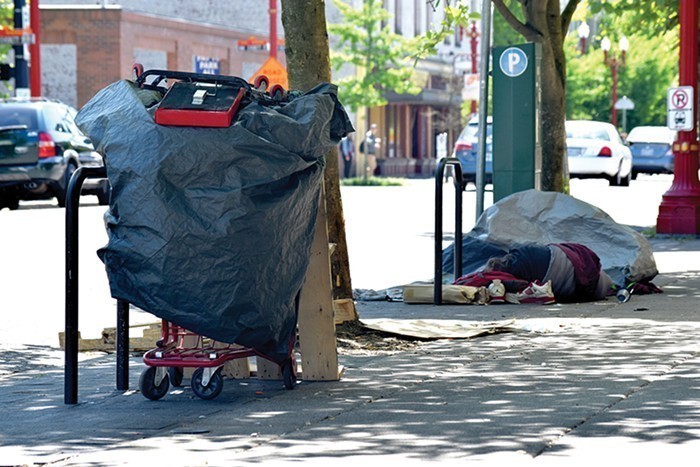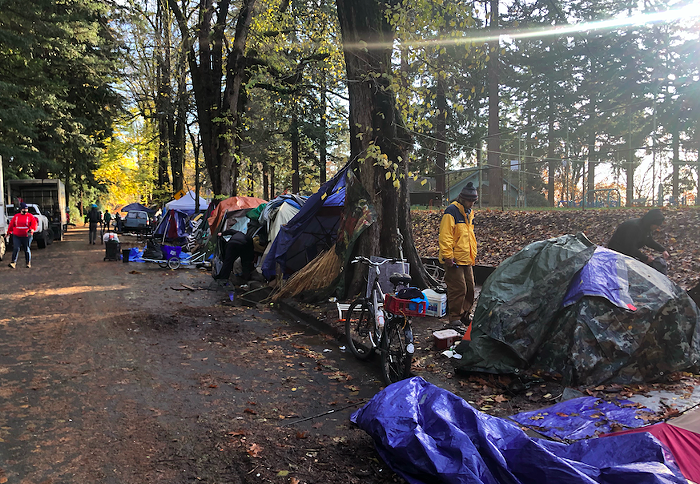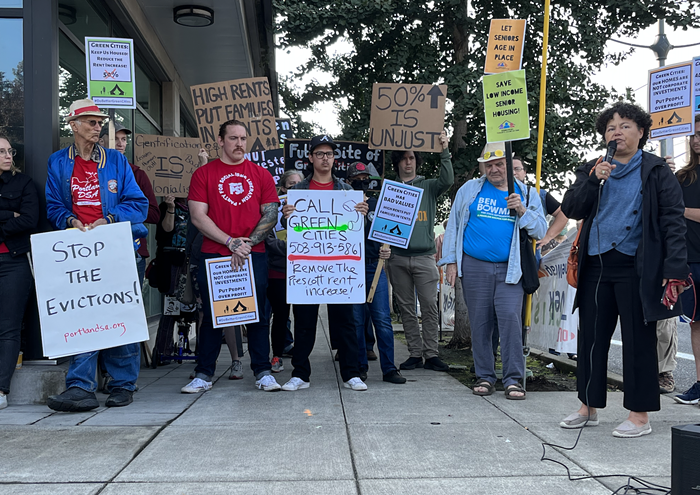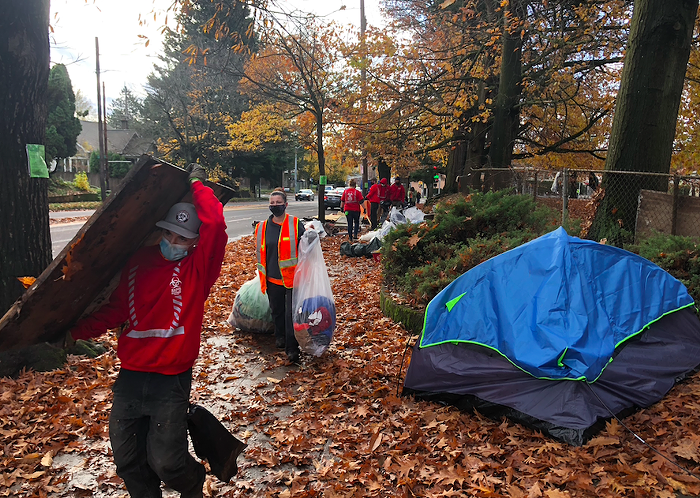
In early November, Josh Lehner, an economist with the Oregon Office of Economic Analysis, delivered a simple message to the Home Builders Association of Metropolitan Portland: housing prices in Oregon are going to continue to rise.
Lehner’s presentation noted short-term issues in housing construction like labor and supply shortages that are partially responsible for a slow rate of building in the last year.
But he also highlighted long-term structural issues that confirm much of what many communities in different regions of the state have been feeling for years. Housing prices have become exorbitant, competition for housing is stiff, and many working people are being priced out of their communities.
According to Lehner, none of this was impossible to see coming.
“Affordability is worse,” Lehner said. “Purchase prices are up. That means that you need a larger down payment, so that means you need to have more income saved, or take out a larger loan, so those barriers to entry to the housing market are worse today than they have been… most of that has to do with the fact that we have underbuilt housing. That’s the root issue here.”
Oregon has indeed been failing to build enough housing to meet demand for decades. Starting around 1980, the state began planning on there being one unit of housing per household—whether that is a family or single individual—to meet the state’s housing needs. But that plan did not account for vacant homes, vacation homes, or the decay of a certain percentage of homes over time.
Now, Oregon has the second-lowest number of housing units per household in the country. Only Washington fares worse.
The result is that the state doesn’t have the number of homes available to meet current—let alone future—demand. That is particularly true in and around metro areas like Portland and Bend, but it is also true in rural areas, where demand is also outstripping supply and Oregon homes are more expensive than the national average.
Renters have been hit hard. So has the population that is looking to buy a home, which, given the relative youth of Oregon’s population, Lehner estimates will grow exponentially over the next decade.
To keep its residents from leaving and provide them with the traditional financial security of home ownership, the state needs to build new housing fast. A study conducted by the consulting firm ECONorthwest on behalf of the state shows that Oregon needs to build nearly 30,000 new units of housing per year for the next 20 years to keep up with demand.
According to those same numbers, the state needs to build nearly 1,500 units per year for the purpose of housing its homeless population—directly providing housing having been shown in multiple studies to be the most cost effective way to transition people out of homelessness.
If Oregon can’t start building more housing quickly, it risks running into the same challenges that California is currently facing: the displacement of lower and middle-income residents and high barriers to residency for potential newcomers, leading to a net decline in population and a slowdown in economic growth.
This population decline, documented in the 2020 census, means California will lose a representative in Congress next year and an electoral vote for the first time in its history. Oregon, meanwhile, will gain a representative and an electoral vote due to its surging population—but if the state does not build more housing, that growth will stall.
Broadly speaking, there are two types of affordable markets in the US. One is in places like the Rust Belt midwest, where prices are low because demand is low. The other is in the southern Sun Belt region, where states like Texas are rapidly adding housing and population.
“Frankly, one of the ways those Sun Belt metros achieve better production and affordability is sprawl,” Lehner said. “Obviously that’s not the route that Oregon and Washington are looking to go in terms of our land use policies and the like, so what do you do?”
Oregon has taken several decisive steps in recent years to make it easier to build new housing without sprawl—most notably in 2019, when Gov. Kate Brown signed a bill championed by State Rep. Tina Kotek requiring cities of more than 10,000 people to allow for the building of duplexes and fourplexes in areas zoned for single-family homes.
That bill made Oregon the first state in the country to essentially outlaw single-family zoned neighborhoods in cities. California followed suit earlier this year.
The passage of that 2019 bill signaled a serious shift in housing policy from the state, which the state legislature expanded upon this year by removing barriers for Oregonians subdividing homes and building accessory dwelling units.
But the effects of those policy changes to increase housing density may not be entirely apparent for years, and thousands of Oregonians are facing housing instability today.
“It will take several decades of building market-rate housing to get the market back to more of an equilibrium where housing is broadly more affordable,” said Mike Wilkerson, an ECONorthwest partner and director of analytics. “The question becomes, in the interim, what can the state do to help bridge that time?”
According to Wilkerson, the answer is direct, immediate, subsidized interventions like housing vouchers and rent-controlled units that would help people get into housing quickly. Federal aid, like the Build Back Better Act, could help finance those kinds of interventions.
“Those units are never built by the market and are only ever built by the public sector,” Wilkerson said.
Yet, if the state’s history is an indicator, there is no guarantee that simply building new housing will support all Oregonians equally.
“The last time we built a lot of housing, suburbia, there were a lot of people excluded from that,” said Stacie Sanders, a policy and advocacy director at Housing Oregon. “There was redlining and steering and unfair loan practices, so I don’t know that we’ve ever seen in American history where everybody was included.”
As a result, housing wealth in Oregon is disproportionately concentrated among white homeowners, and high entry prices to home ownership make accessing that wealth even more difficult for younger, less privileged Oregonians trying to build families and lives in the state without significant familial help.
“Generational wealth is huge for many immigrants and refugees, because some might be newcomers, so putting down a deposit can be a huge thing,” Cristina Palacios, director of the Housing Justice program at Unite Oregon, said. “It takes years sometimes to create that generational wealth to be able to become homeowners. But also when it’s renting, rents keep going up... and wages don’t go up.”
Housing insecurity intersects with broader issues like the climate crisis as well, with Oregon experiencing fires and heat in recent years that have cost hundreds of people their homes and some their lives.
“In Rogue Valley, one of the biggest challenges for affordable housing is that during the fires, many of the houses burnt [down], and a lot of community members are leaving the state because they cannot find housing anywhere,” Palacios said.
As the climate crisis intensifies, the benefits and risks of home ownership may change. But for now, home ownership is still a gateway into the middle class, an investment that many are eager to make.
The tension is that housing cannot be both an excellent investment and affordable, because scarcity is a main factor that drives home values up. That has been excellent news for older Oregonians who own homes, but terrible for those who do not.
Very broadly, the future of the state depends on whether we view housing as an investment strategy or a moral imperative. Sanders has a clear stance.
“Housing to me is a right. Everyone deserves to have safe, sanitary, healthy housing. Accessible to jobs and transit, and that is climate friendly,” Sanders said. “How do we get there? One step at a time.”


















